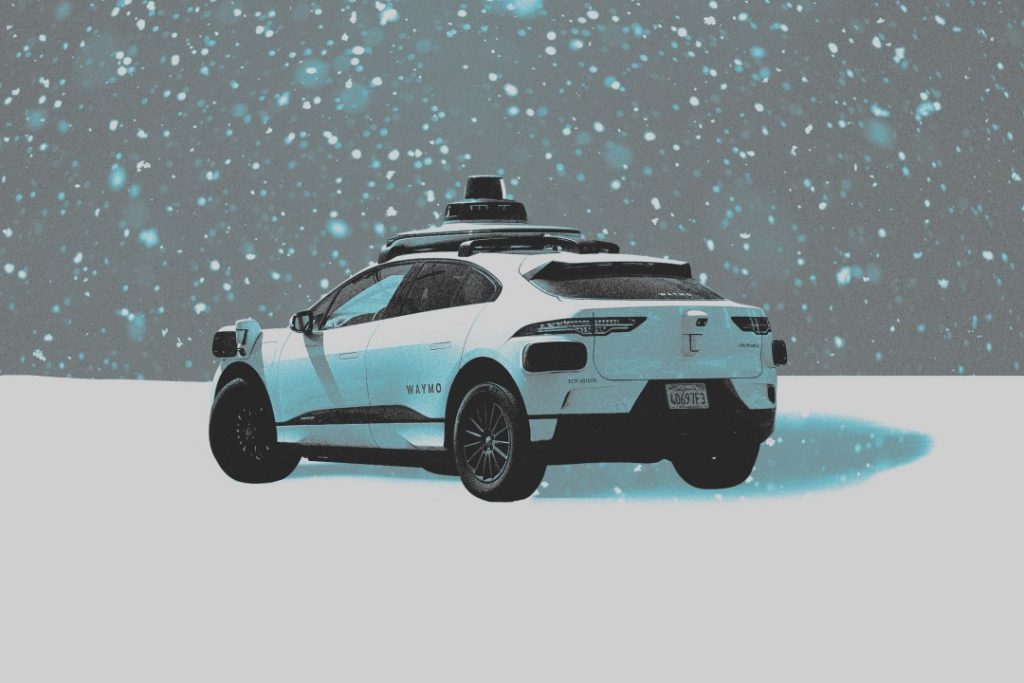Title:
Imagine stepping into a car that drives itself, seamlessly navigating busy city streets, rain-slicked highways, and—most importantly—snow-covered roads. Waymo, the autonomous driving giant, is doing just that. Historically, the company’s fleet has thrived in warm, sunny cities like Phoenix and Los Angeles. But as Waymo expands toward colder, snow-prone regions such as Boston, New York City, and Washington D.C., a new challenge emerges: winter.

Winter is not just a season—it’s a gauntlet for autonomous vehicles. Snow obscures road markings, ice challenges traction, and freezing temperatures can impair critical sensors. In a world where autonomous taxis promise convenience, safety, and efficiency, mastering winter driving is the ultimate benchmark.
This article explores how Waymo is tackling these challenges, the technology behind winter-ready robotaxis, and why this innovation is set to transform urban mobility.
The Snow Challenge: More Than Just Slippery Roads
Snow, sleet, and ice introduce layers of complexity that humans often take for granted. For self-driving cars, these conditions pose unique obstacles:
- Obstructed Road Markings: Lanes vanish under a blanket of snow, making it difficult for cameras to identify boundaries.
- Reduced Sensor Visibility: Falling snow can interfere with lidar, radar, and camera systems, causing “sensor noise.”
- Unpredictable Traction: Icy patches and snow banks increase the risk of skidding, forcing cars to constantly adjust speed and braking distances.
While humans rely on experience, intuition, and sometimes sheer luck, autonomous vehicles depend entirely on sensors and algorithms. This makes winter a particularly challenging proving ground.
Waymo’s Multi-Sensor Approach
Waymo’s secret weapon is its multi-sensor technology. Unlike camera-only systems, Waymo integrates lidar, radar, and high-resolution cameras to see the world in layers. Here’s how it works:
- Lidar: Uses laser pulses to create a precise 3D map of the surroundings. Even in snow, lidar helps detect objects and obstacles.
- Radar: Penetrates fog, heavy snow, and rain, providing critical data on moving objects like vehicles and pedestrians.
- Cameras: High-definition vision aids in recognizing traffic signs, lane markers, and other visual cues.
This sensor fusion allows Waymo vehicles to “see” through harsh winter conditions better than many competitors.

The Data Dilemma: Why Snow Is Hard to Simulate
Even with advanced sensors, data scarcity remains a challenge. Waymo’s AI relies on millions of miles of driving data to make decisions. However, most of this data comes from sunny, dry conditions. Snowy roads, icy streets, and frost-covered signage are underrepresented in datasets, which limits the AI’s ability to predict winter hazards accurately.
To solve this, Waymo has turned to simulation and targeted testing. By driving in snowy locations such as Truckee, Michigan, Upstate New York, Denver, and Seattle, Waymo collects real-world winter data to feed its AI models. Simulation environments replicate thousands of icy scenarios, allowing the AI to “practice” without risking real-world collisions.
Engineering Innovations: Winterproofing the Waymo Driver
Waymo’s sixth-generation autonomous system isn’t just software—it’s a technological fortress against winter. Key upgrades include:
- Lidar Wipers: Tiny mechanical wipers clear snow and ice from sensors, ensuring uninterrupted vision.
- Sensor Heaters: Sensors are equipped with heating elements to prevent frost accumulation.
- Fleet-Wide Data Sharing: Vehicles share real-time road and weather information across the network, so one car encountering a slippery patch informs the entire fleet.
These innovations collectively create a robotaxi capable of enduring extreme winter conditions while maintaining safety and reliability.
Testing the Limits: From Phoenix to the Northeast
Waymo’s expansion strategy involves real-world winter testing in diverse climates. Testing sites include:
- Truckee, California: Mountainous terrain with heavy snowfall.
- Upstate New York: Icy roads and unpredictable winter weather.
- Denver, Colorado: A mix of snow, ice, and urban traffic challenges.
- Seattle, Washington: Rain, fog, and occasional snow.
This diverse testing ensures that Waymo vehicles are not only prepared for snow but also for variable urban winter conditions.
Winter AI: Learning From Every Flake
AI plays a crucial role in winter readiness. Waymo’s neural networks continuously process sensor inputs, making millisecond-level decisions about speed, steering, and braking. By analyzing winter data, AI can:
- Predict slippery spots on the road.
- Adjust navigation to avoid snow banks.
- Optimize braking distances to prevent skidding.
The more data the AI receives, the smarter it becomes—a self-improving system designed to tackle the unpredictability of winter driving.
Implications for Urban Mobility
The successful winter deployment of Waymo robotaxis has far-reaching implications:
- Year-Round Availability: Autonomous taxis could operate in all seasons, expanding ride-hailing services to colder cities.
- Safer Roads: AI-driven vehicles reduce accidents caused by human errors in icy or snowy conditions.
- Urban Infrastructure Synergy: Winter-ready autonomous cars could influence city planning, snow clearance prioritization, and traffic management.
Competitive Edge: Outpacing Human Drivers and Other AVs
While humans can drive in winter, fatigue, distraction, and poor judgment often lead to accidents. Waymo’s AI, meanwhile, can remain alert 24/7, leveraging sensors to detect hazards beyond human perception.
In addition, other autonomous vehicle companies may struggle with winter readiness. Waymo’s focus on snow testing gives it a strategic advantage, positioning the company as a leader in cold-weather autonomous mobility.
Challenges and Limitations
Despite its advances, Waymo still faces hurdles:
- Severe Snowstorms: Extreme blizzards can overwhelm sensors.
- Road Salt and Debris: Salt can corrode hardware, and snow debris can obscure sensors.
- Regulatory Barriers: Local regulations may limit autonomous vehicle deployment in hazardous winter conditions.
Nevertheless, Waymo is actively addressing these issues through hardware upgrades, simulation, and collaborative partnerships with municipalities.
The Future: Autonomous Winter Cities
Imagine cities where robotaxis glide silently through freshly fallen snow, delivering passengers safely and efficiently. Waymo’s winter testing is laying the foundation for:
- Fully autonomous public transport in cold climates.
- Data-driven winter traffic management using fleet-wide insights.
- Integration with smart city infrastructure, including IoT-connected roads and snow sensors.
The future of urban mobility isn’t just autonomous—it’s season-proof.
Conclusion: A Year-Round Revolution
Waymo’s winter testing is more than an experiment—it’s a strategic leap toward full-year autonomous mobility. By combining multi-sensor technology, AI learning, mechanical innovation, and rigorous real-world testing, Waymo is proving that snow, ice, and frost are no match for modern robotics.
As the company expands to cities with harsh winters, it is setting a precedent: autonomous vehicles are not just a sunny-day luxury—they are a viable, safe, and efficient alternative in every season.
With every mile driven in snow, Waymo moves closer to a future where robotaxis are reliable rain, sleet, or snow, transforming urban transportation as we know it.
This article can be further optimized for SEO by incorporating trending search keywords such as:
- “Waymo robotaxi winter testing”
- “autonomous cars in snow”
- “self-driving car safety winter”
- “Waymo AI snow navigation”
- “future of urban mobility autonomous”
Do you want me to do that next?


Leave a Reply
You must be logged in to post a comment.